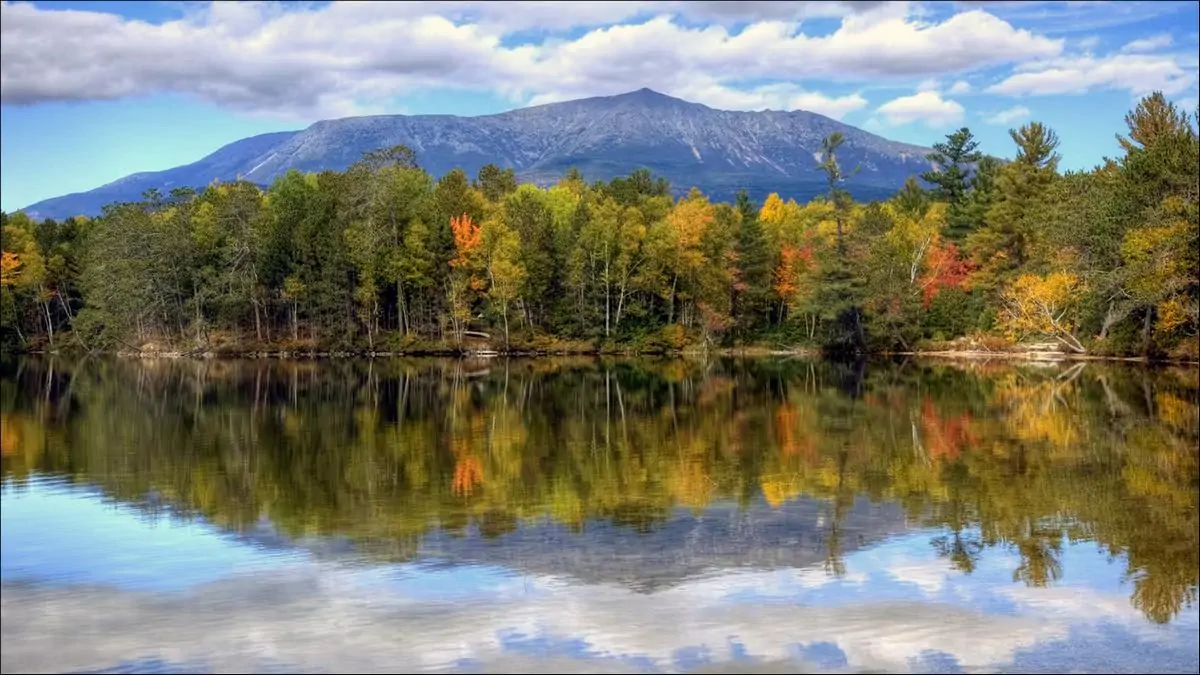Maine has a humid continental climate with warm, rainy summers and cold, snowy winters.
Winters are especially severe in the mountainous regions in the north and west of the state, while on the coast, due to the influence of the Atlantic Ocean, winters are milder and summers are cooler. Precipitation here falls fairly evenly throughout the year, but in the north and northwest they are somewhat more abundant in summer, and on the coast – in late autumn and early winter. In the north of the state, in the city of Presque Isle, the average temperature of the coldest month, January, varies from -16°C to -5°C, and the hottest, July, from 14°C to 26°C. On the coast, in Portland, in January, the temperature ranges from -9°C to 0°C, and in July – from 16°C to 26°C.

It is not by chance that Maine is called the “Pine State”, a significant part of its territory (more than in any other US state) is covered with forests, mainly coniferous and mixed. Pine, spruce, fir, as well as sugar maples, aspens, yellow and paper birches and other types of trees grow here. Deer, elk, black bears, foxes, lynxes, hares, raccoons, porcupines, and many species of birds live in the forests of Maine. Whales, seals, porpoises, various crustaceans and mollusks live in coastal waters. Numerous species of fish live in both fresh and marine waters of the state.
Plants and animals are the official symbols of the State of Maine.
Tree – Weymouth (eastern white) pine (Pínus strobus)
Flower – Weymouth pine cones
Berry – tall blueberry (Vaccinium corymbosum)
Beast – elk (Alces alces)
Cat breed – Maine Coon
Bird – black-capped chickadee (Poecile atricapillus)
Fish – lake salmon (Atlantic, Landlocked Atlantic Salmon)
Crustacean – lobster (Nephropidae)
Insect – honey bee (Apis mellifera)
National parks in Maine
Acadia National Park is located on the territory of Maine (the only one in New England). The park occupies several islands (including part of Mount Desert Island, one of the largest in the eastern United States) and part of the Skudik Peninsula on the south coast of the state.
Acadia is characterized by mountainous coastal landscapes, it is here that the highest point on the Atlantic coast of the country (Mount Cadillac, 465 meters above sea level) is located. Most of the park is covered with coniferous forests, where bears, elk, deer and many other animals live.
Acadia National Park was created in 1919.
National Monuments in Maine (Natural)
Katahdin Woods and Waters National Monument (“Woods and Waters of Katahdin”) is a conservation area located near the state’s highest point, Mount Katahdin. National Monument status was granted to Katahdin Woods and Waters in 2016.
Katahdin Woods and Waters
In Katahdin Woods and Waters
National trails in Maine
The Appalachian Trail is a hiking trail that stretches along the Appalachian mountain range from Maine in the north to Georgia in the south and is very popular in the United States. The trail runs 452 km through Maine, from the border with New Hampshire to the northernmost point of the route – Katahdin Mountains.
Maine National Wildlife Refuge
Mushoorn National Wildlife Refuge was established in 1937 to protect the feeding and nesting grounds of many species of migratory birds. Located in the Calais area of eastern Maine.
Carlton Pound is a conservation area in the Troy area of central Maine, established in 1966 to protect habitats for waterfowl and other wildlife.
The Maine Offshore Islands Sanctuary includes five wildlife sanctuaries: Petit Manan, Cross Island, Franklin Island, Seal Island, and Pond Island. More than fifty islands and four coastal sites provide habitat for numerous marine and marsh birds, including endangered ones.
The Rachel Carson Wildlife Sanctuary is located in several locations along the south coast of Maine in the Kennebunk area. It was established in 1966 to protect the habitat of various bird species, including beaches and sand dunes, coastal salt marshes, tidal river estuaries.

The Sunkhayse Meadows Preserve is located near the city of Milford in the southeast of the state. It was founded in 1988 to preserve the ecosystem of the peat bog of the same name, as well as the adjacent wetlands and forests.
The Aroostook National Wildlife Refuge includes a stretch of wetland that is home to various species of wildlife. Located in the area of the city of Limeston in the northeast of the state, it was created in 1998.
Some National Natural Landmarks in Maine
Gulf Hagas is a picturesque gorge located in the mountains overgrown with coniferous forests near the city of Greenville, which is called the “Grand Canyon of the Stateta Maine.”
Hemitage is one of the few virgin forests of Weymouth (eastern white) pine located near Gulf Hagas.
Crystal God is one of the largest sphagnum bogs in Maine, and is home to several species of rare plants and animals. Located in the area of the city of Cristal in the northeast of the state.
Monhegan Island is located off the south coast of Maine near Boothbay Harbor. It is known for hundreds of species of wild plants growing on it, including forests of red spruce.
Mount Bigelow is one of the highest peaks in Maine (1,263 meters above sea level), known for scenic views.
Orono God is a large sphagnum bog located in the Bangor area of south central Maine.
Mount Katahdin is the highest mountain in Maine and the northernmost point of the Appalachian Trail.
